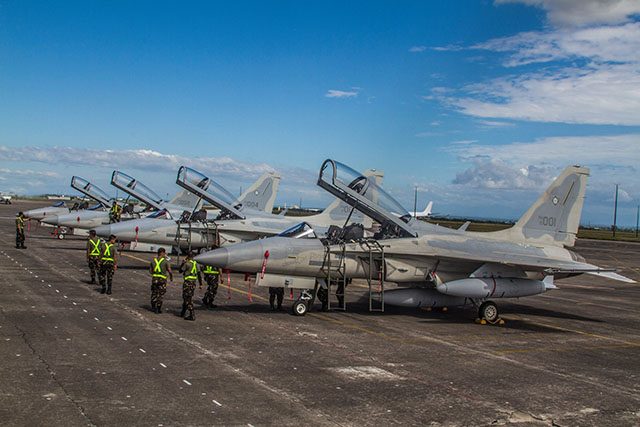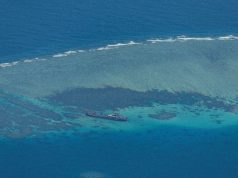The Philippine Air Force continues to beef up its defense and surveillance capabilities at a time of maritime tensions.
Aerospace company Airbus at a press conference on Tuesday in Manila presented an aircraft it is recommending to the Armed Forces of the Philippines.
The tactical and strategic aircraft A400M and the C295, a number of which the air force purchased in 2014 and the A330 Multi Role Tanker Transport are among the products the company will offer in line with the armed forces’ modernization drive.
The C295 is hailed as one of the top planes for maritime and overland surveillance, with an integrated tactical system that provides fusion to assist pilots.
The A400M airlifter meanwhile is in use in Asia’s most developed countries such as Malaysia and Singapore.
The country’s defense department, meanwhile, has its eyes on two squadrons of multi-role fighters, that will possibly come from Sweden’s Saab. An additional 12 FA-50 lead-in fighter planes are also expected to be delivered from South Korea.
Calls to modernize the Philippines’ defense and surveillance assets have sounded in recent years amid tense relations with China over its overreaching claims in the South China Sea.
air-to-sea missiles and air-to-surface missiles for the Philippine Air Force to pump up the AFP Modernization and which will help the AFP in defending the Philippines from any external aggression without any foreign help.
— James Romer Velina (@JamesVelinaLXIX) June 9, 2018
Former president Benigno Aquino III in July 2013 set aside P75 billion to help modernize the air force by purchasing new and modern aircraft before the end of his term. President Rodrigo Duterte also vowed to bankroll the program’s second phase from 2018 to 2022.
Military modernization: An urgent requirement
RA 10349 or the Revised AFP Modernization Act expressly mandates the active development of the AFP’s capabilities. The purchase of new equipment and weapons and the phaseout of old assets is one of the law’s directives.
Passed in 2012, the updated version of the modernization act first passed in 1995 mandates the continued improvement of the country’s arms capabilities for 15 years following passage of the act.
Horizon 2 of the program is expected to run from 2018 to 2022 and mandates the purchase of different kinds of aircraft and as well as unmanned aerial vehicles for the benefit of the air force. A budget of P300 billion for Horizon 2 was approved in June 2018.
The acquisition of a number of multi-role fighter jets was approved in June 2018, one of the first big approved purchases under the modernization act’s second phase this year.
Those advocating for the modernization of the country’s military are celebrating the country’s recent purchases so far.
Some analysts have attested to the Philippines’ modernization of the AFP’s assets over the years, even as ties with China improved under the Duterte administration.
Alexander Vuving of the Asia Pacific Center for Security Studies pointed to an increase in purchases of sea vessels and aircraft as proof of the country’s commitment to improving its defense and security assets.
Sources of new assets
The Philippines aside from purchasing from private manufacturers has also consolidated security and defense partnerships with other countries.
The Australian government sent a number of aircraft to the Philippines during the Marawi siege of 2017 to help local armed forces identify terrorist elements in the city.
A conference attended by various policy organizations based in Australia as well as representatives from the Department of National Defense and the Australian Embassy held in July 2018 in Manila explored opportunities for security cooperation between the Philippines and Australia.
The government of Jordan in May 2018 also pledged to donate two attack helicopters to the Philippines.
A “wishlist” prepared by military officials puts the emphasis on equipment needed by the PAF, which includes multi-role fighters, airlifters, maritime patrol aircraft and heavy lift helicopters.










